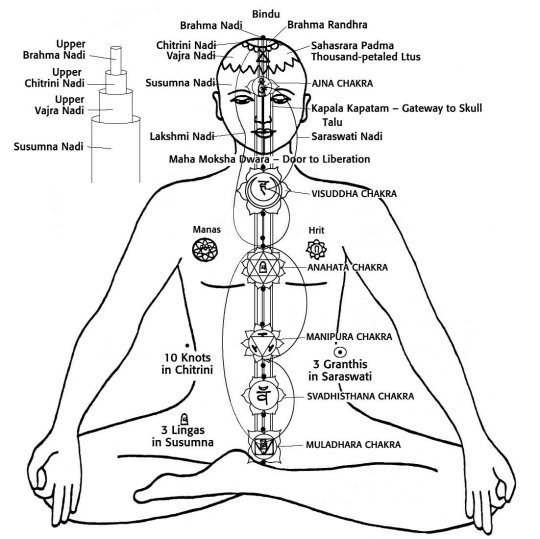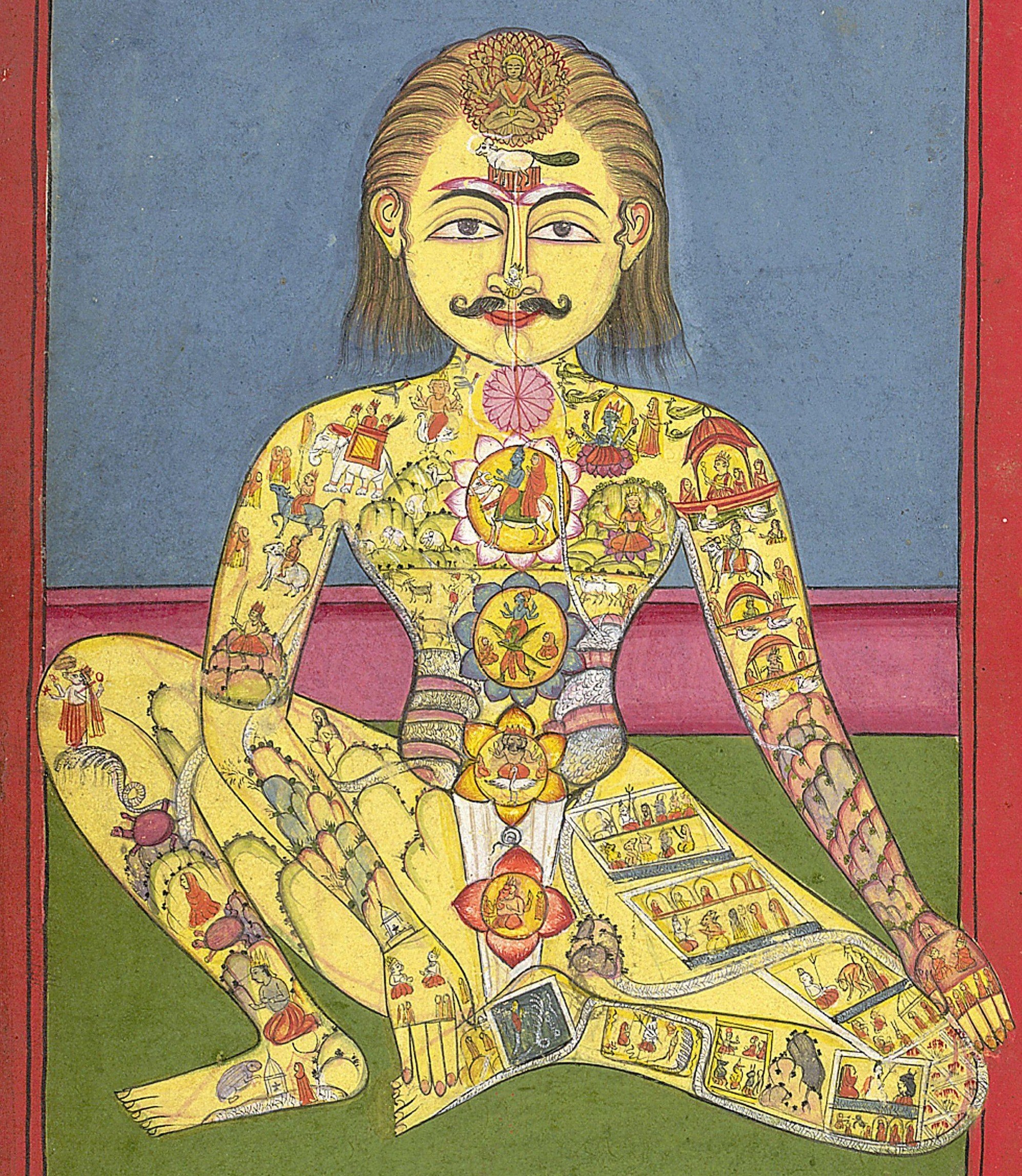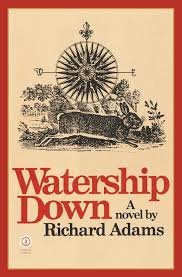May 2023 Dispatch: The Chakras, or “God be in my eyes…”
Happy May, Galaxy buddies! For May, we’re diving into the chakras, and I’ve got quite a circuitous journey to take you on in this monthly musing, which is great, because the Sanskrit word chakra literally means wheel! Buckle up.
Let’s start with this beautiful Christian prayer that dates back to the 1500’s. It’s called the Sarum Prayer:
God be in my head, and in my understanding;
God be in my eyes, and in my looking;
God be in my mouth, and in my speaking;
God be in my heart, and in my thinking;
God be at my end, and at my departing.
This is one of my most favorite prayers of all time. I like it because it takes the concept of the divine and places it firmly within the confines of our physical selves. We’re not being asked by some shadowy heavenly being to vacate our physical experience; rather the opposite: we’re making space in our physical bodies for the divine to settle in and get cozy.
And by the way, I love a good prayer. I love the idea of calling out an intention, a wish, a sorrow, or an invitation in a way that makes it holy, poetic, elevated… you get it. Which is doubly weird, because I also like to joke that I don’t believe in anything. I don’t have a particularly strong faith in Big-G-God. I’m not sure if there really is such a thing as a soul. Harry Houdini spent his entire life debunking psychics, mediums and mystics, but promised his wife that, if he died first, he would find a way to contact her from beyond with a secret phrase only the two of them knew, and she tried, for 1 0 years - and to this day, there is a Halloween seance to try to contact Houdini every year. I see you, Houdini; that’s me, too. I don’t really think there’s an afterlife. I’m a skeptic to my core, and I’m firmly not a joiner. But I’m probably the most spiritual skeptic you’ll ever meet.
So what gives? How do I reconcile these two very disparate parts of who I am? Well, partially, I don’t - I love a good dose of cognitive dissonance - actually, dissonance of any type is always compelling to me, as a musician. One thing I’ve learned as a yoga practitioner is that I don’t need to tie anything up into a neat resolution - and the practice and process of yoga is much more compelling when I don’t.
We’ve been hanging out in this dissonance as we study yoga philosophy with our current crop of teacher trainees and practice immerse-ers. As we read the Yoga Sutras, we’ve been teasing out the concepts of Purusha and Prakriti - soul and body, very simplistically defined - and the difference between dualist and non-dual philosophical systems. There are some yogic texts that define our experience of living as divided between a body and a soul, reality as we know it, and eternal reality that we perceive once we escape the body. And there are yogic texts that define our experience of living as entirely illusion, and the only reality that exists is the one we get to after we die.
And then there’s Tantra - which translates roughly as “woven.” Tantra talks about our experience as bodies on earth as sort of a conduit - we have to go through it to experience divinity and the spiritual - and the journey through being a human on earth is the only way to get there. There is divinity and holiness woven into the physical world and our life journey through it.
The concept of the chakras - these energetic vortices that lie along our spinal column, roughly correlated with nerve ganglia - are one of the most co-opted and misunderstood aspects of our modern Westernized yoga practice. There is a lot that we attribute to the concepts of the chakras that really comes to us from New Age philosophy, and isn’t found in traditional yogic texts. There are different systems of chakras - some have fewer than 7, some more than 7 - here’s a picture that shows two “extra” chakras, Hrit and Manas.
But one indisputably yogic “fact” about chakras is that they are firmly in the Tantric tradition of yoga philosophy. What this means is that the Tantric yogis, in an effort to experience divinity as human, undertook almost-scientific experiments to see how they could invite the divine to play within their bodies. This is where a concept like Kundalini energy - the coiled energetic snake that lies at the base of the spine, ready to ascend and pierce each chakra - comes from.
One text I read about the tradition of chakras in Tantra explained it as inviting God into a particular part of the body, and meditating on the experience of God dwelling in that spot. God be in my eyes, and in my seeing.
This resonates for me. Because long ago, as a 9-year old on a beach towel in my bedroom, practicing yoga by myself, I sussed out that there was something really special, really spiritual about moving the body, breathing the body, and celebrating the body. And I just kept doing it, of my own accord, for the rest of my life. Pretty weird thing to happen upon as a kid, and to stick with. The practice of yoga, for me, has always been one of prayer - inviting my body to move in a way that is intentional, blessed, celebratory, emotive, and fully sacred and holy. When I walk into a space that feels open, beautiful or sanctified, I have a full-body reaction - it takes every bit of self-control not to dance through it, and sometimes I don’t practice self-control, and just MOVE in the space.
So, back to these little spinning vortices of energy, the chakras - they’re a reminder of the intrinsic holiness of you. They’re dynamic, they’re in motion, and our awareness and knowledge of them comes from these crazy awesome body scientists, the Tantric yogis, who were like, “Let’s invite God to the party in our bodies and see what happens.” That’s my kind of party. I’ve said it before, but it’s worth repeating: you don’t need to believe in anything in particular to come to classes and hang out with us at the Galaxy. But if you wanted maybe just one thing to believe, I hope it’s this: your body, your experience as a human, your yoga practice - it’s big-G-God.
I hope you’ve felt it at certain moments when you’re practicing yoga, and I hope we can embody it for you here in the studio, in our classes. There’s this great song, Final Form, which is beautifully covered by Liane LaHavas, and I’ll leave you with a little lyric - to me, it conveys that celebratory, wriggly, dancey, sometimes struggle-filled process of embodying and becoming that is at the heart of a yoga practice, and how I most palpably understand of the chakras.
“My home,
My head
Take form
First body, last body
I wish the cesspit would open like a bible
I wish the rotten would blossom like the tidal
And I’ve never been able to divide us
I’m gonna wrestle and wrangle until my legs become unreal
I’m gonna stumble and scramble
My way to lactic ecstasy.”
Wrestling, Wrangling, and Stumbling with you,
Anna
What I’m Reading
You may already know this, because I talk about it incessantly, but I’m a huge fan of the book Watership Down - which is a sort of fantasy novel about rabbits. Rabbits on an epic journey. Hear me out, if you’re feeling skeptical. Richard Adams wrote this book from of stories that he would tell his kids at bedtime, and it’s so incredibly immersive, emotional, funny, rich - the rabbits have a language and amazing stories and mythology - and each rabbit has a personality that makes you feel like you really know them (my favorite rabbit is Blackberry - the clever one).
I read this book once a year, right about now, because it’s baby bunny time in Milwaukee, and at my dusk walk times, rabbits are everywhere. The journey this book takes me on is incredibly moving, and if you catch me sobbing in a coffee shop while reading in springtime, it’s probably because I just read the end pages of Watership Down. I hope you try it out - if you read it, please let me know! I want to know how you liked it.
If you’re still skeptical, at least check out the 1978 animated film - and warning, it’s really trippy and a little scary for kids! But aren’t all the best things a little edgy and scary???




